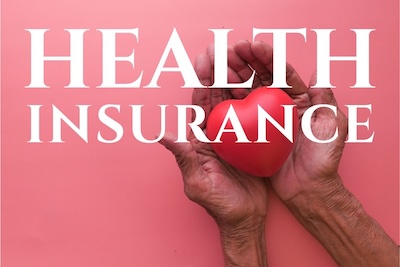
The Evolution of Healthcare in the Philippines – From Colonial Roots to Modern Challenges
Healthcare in the Philippines has transformed dramatically over the past century — from colonial-era charity hospitals to a national system centered on PhilHealth. Yet for many Filipino families, getting consistent, affordable care remains uncertain.
Across both cities and rural provinces, the experience often means long waits, limited facilities, or turning to private clinics when public hospitals fall short. These realities don’t just affect access — they shape how Filipinos think about health, responsibility, and the role of government.
While life expectancy has improved greatly since the Spanish colonial period, it still lags behind that of more developed nations — reflecting not only the healthcare system itself but also decades of limited public investment and uneven policy support.
This article explores how the Philippine healthcare system evolved, what PhilHealth set out to achieve, and why public healthcare continues to struggle to meet the needs of the people it was built to serve.

Table of Contents
Click a topic below to jump directly to that section of the guide.
3.American Era - Health & Moderization
4.Independence, Recovery & Expansion
6.Post Marcos - The Demand for Change
Looking for more practical help? These companion guides can make navigating the Philippine healthcare system much easier — whether you’re just starting your journey or already living here as a foreign resident.

Understand how PhilHealth works for expats — who can join, what it covers, and how to enroll.

Compare private, public, and international insurance options to protect your health in the Philippines.

Learn how to manage your prescriptions as an expat — what to bring, what’s available locally, and how to plan for emergencies.

Healthcare Before PhilHealth: Colonial Roots and Post-War Struggles
To begin this journey and understand what led to the creation of PhilHealth in the 1990s, it's important to look at how healthcare developed over time — and how each era left its mark on public access, trust in institutions, and the role of government. From colonial charity to centralization under Marcos, the healthcare system has long reflected the broader social and political forces shaping Filipino life.

1565–1898: Healing and Hierarchy During the Spanish Colonial Period
Estimated population by late 1800s: around 7 million. Average life expectancy: 30–35 years.
Healthcare under Spanish rule was built around religious orders and colonial class structure. Urban charity hospitals like San Juan de Dios served the poor aligned with the Church, while most Filipinos depended on traditional healing practices passed down through generations. Western-style medicine was scarce, and access was defined more by proximity to power than by public need.

1898–1946: The American Era – Public Health and Modernization
Estimated population by 1940: around 17 million. Average life expectancy: 45–50 years.
American rule introduced vaccination drives, hygiene campaigns, and the professionalization of medical care. Public health became a government concern for the first time. Still, much of the investment remained concentrated in cities and military outposts. Outside of urban areas, healthcare remained informal, with few facilities or trained personnel.

1946–1965: Independence, Recovery, and Uneven Expansion
Estimated population in 1960: around 27 million. Average life expectancy: 52–55 years.
After independence, rebuilding the healthcare system was a national priority. The Department of Health was formally created in 1947, and new hospitals began opening in provincial centers. But progress was inconsistent. Budget constraints, shifting political priorities, and limited planning capacity meant that modern healthcare remained mostly an urban experience. In rural provinces, medical access depended heavily on missionary work or underfunded government clinics.

1965–1986: Centralized Vision and State Control Under Marcos
Estimated population in 1980: around 48 million. Average life expectancy: 60–62 years.
The Marcos years brought national plans and new health policies, including the Philippine Medical Care Act of 1969, which introduced Medicare for formal workers. However, state healthcare became closely tied to politics. Funding and hospital improvements were often awarded based on loyalty, and public facilities in many regions were neglected. Though the vision pointed toward universal care, everyday access remained unequal and deeply politicized.

1986–1995: Post-Marcos Reforms and Rising Demand for Change
Estimated population in 1995: around 68 million. Average life expectancy: 66–68 years.
The return to democracy saw efforts to decentralize health services and improve access. Yet the system remained fragmented and unevenly managed. Urban residents increasingly turned to private clinics, while large parts of the country — especially remote areas — continued to lack consistent care. Public trust in government-run healthcare was low, setting the stage for a broader solution. That solution arrived in 1995 with the introduction of PhilHealth.

The Rise of PhilHealth
By the mid-1990s, healthcare in the Philippines was made up of public hospitals funded by the government and local authorities, private clinics and hospitals operating independently, and a limited insurance program for formal workers called Medicare. Most people paid for treatment themselves, and access to care varied widely depending on where you lived and what you could afford.
To address growing inequalities in access to healthcare and ease the financial burden on Filipino families, the government passed the 1995 National Health Insurance Act, which formally created PhilHealth — a state-run insurance program designed to help cover part of the cost when members receive treatment at public or private hospitals.

PhilHealth’s Impact — Progress & Problems
Since its introduction, PhilHealth has expanded insurance coverage to over 90% of Filipinos — a major step toward inclusion. It has helped many avoid financial disaster during hospital stays and offers basic support for emergencies and chronic illness. But coverage doesn’t always mean protection.
To this day, problems persist in the system. Some hospitals continue to reject PhilHealth patients due to delayed payments or low reimbursements. In poorer areas, public hospitals may be underfunded or out of reach. Even when care is available, many struggle with paperwork, don’t know how to use their benefits — or simply can’t afford to pay what’s left of the bill.
When that happens, families often turn to local officials — mayors, barangay captains, or congressmen — for help with medical bills. These requests may result in guarantee letters or small subsidies, but support isn’t guaranteed. It often depends on available funds, local politics, and personal connections — not formal rights. For many, this kind of informal assistance has become a hidden part of the healthcare system.

Funding PhilHealth
PhilHealth is funded through a mix of payroll deductions, voluntary contributions, and government subsidies. For formally employed Filipinos, contributions are shared with employers. In 2025, the rate is set at 4.5% of monthly income.
Many others — including informal workers, farmers, and low-income families — are covered through national or local government subsidies. Self-employed and voluntary members, such as expats and overseas Filipinos, typically pay between ₱10,000 and ₱15,000 per year depending on declared income.
Even so, it’s important to keep in mind that PhilHealth only covers a portion of most medical expenses. Many patients still end up paying significantly more out of pocket for actual treatment.
The table below shows how contributions are handled across different member types:
| Member Type | Who Pays | Notes |
|---|---|---|
| Formal Employees | Employee and employer via payroll deduction | Contribution is 4.5% of monthly income, split 50/50 |
| Self-Employed / Voluntary Members | Individual pays directly | Annual contribution typically ₱10,000–₱15,000 based on income |
| Indigent Families | National government subsidy | Identified through DSWD’s targeting system |
| Senior Citizens | Government subsidy | Covered automatically under the Expanded Senior Citizens Act |
| Sponsored Members | Local governments or third-party sponsors | Used for marginalized groups without regular income |
| OFWs and Expats | Individual voluntary contribution | Contribution based on declared income; required for OFWs under some categories |
Want to Understand PhilHealth in More Detail as a Foreign Resident?
If you're considering enrolling — or you're unsure how PhilHealth fits into your situation as an expat or retiree — our full guide breaks it down clearly. From membership types to coverage and registration, it’s a practical walkthrough of what you need to know.

Understand how PhilHealth works for expats — who can join, what it covers, and how to enroll.

Looking Ahead: Healthcare in a Changing Philippines
1995 to Present — Estimated population in 2025: around 118 million. Average life expectancy: 71–73 years.
Life expectancy in the Philippines has more than doubled over the past century — a sign of broad progress driven by improvements in public health, education, and nutrition. But while more Filipinos now live longer, access to consistent and affordable care remains a major challenge.
For many families, treatment still depends on help from relatives — a reflection of cultural values like bayanihan and utang na loob. When illness strikes unexpectedly, the financial strain can be deep, often threatening income and stability.
PhilHealth was introduced to ease this burden, and in some ways it has. But because it only provides partial funding for treatment, many families still face high out-of-pocket costs. Uneven coverage, underfunded hospitals, and reliance on informal aid continue to shape how the system is experienced. The public expects more than promises — it needs practical results that reach every family.
Progress now depends on political will, public investment, and a sharper focus on everyday realities. Expanding infrastructure, improving basic access, and strengthening trust in insurance are all essential. For most Filipinos, the real challenge isn’t just living longer — it’s making sure healthcare is reliable, affordable, and there when it matter.

Frequently Asked Questions
How did healthcare begin in the Philippines during the Spanish period?
Healthcare during Spanish rule was mainly provided by religious orders and charity hospitals such as San Juan de Dios in Manila. Most Filipinos relied on traditional healers or herbal medicine because access to Western-style healthcare was limited to those close to the Church or colonial authorities. This period shaped early social divides in public health access.
What major health reforms were introduced during the American era?
The American colonial government established the Bureau of Health, launched vaccination and sanitation drives, and created training institutions for Filipino doctors and nurses. Public health became a state responsibility for the first time, marking the beginning of a more organized healthcare system — though rural areas still received little support compared to cities.
When did the Philippines create the Department of Health?
The Department of Health was officially created in 1947 after independence. It took over the fragmented healthcare network left by the war and focused on rebuilding hospitals and training local medical staff. Despite progress, unequal funding and rapid population growth made it difficult to extend modern healthcare beyond major cities.
What was the goal of PhilHealth when it was established in 1995?
PhilHealth was founded through the 1995 National Health Insurance Act to make healthcare more affordable and accessible for all Filipinos. It introduced a national insurance program covering public and private hospitals. While PhilHealth expanded coverage to most citizens, issues like delayed reimbursements and uneven benefits continue to affect service quality today.
Why do many Filipinos still pay out of pocket for medical treatment?
Even with PhilHealth, coverage usually covers only a portion of hospital expenses. Patients still pay for medicine, lab tests, or private doctor fees. Limited funding, low reimbursements, and under-resourced hospitals mean families often shoulder the remaining costs themselves — especially outside major cities where healthcare options are fewer.
What challenges does the Philippine healthcare system face in 2025 and beyond?
The main challenges include underfunded public hospitals, unequal access between rural and urban areas, and slow adaptation to digital healthcare systems. Strengthening PhilHealth’s sustainability, improving staff retention, and expanding primary care facilities remain key priorities if the Philippines is to achieve universal and reliable healthcare for all citizens.

Explore More of the Philippines
The Philippines is a fascinating place to explore, stay long-term, or even retire — and you may already be considering it as a future option. Get closer to the real detail through our guides on Living in the Philippines, Dive the Visayas and Filipino Society.
Living in the Philippines

Everything you need to build a life in the Philippines.

Is month $1000 really enough to live in the Philippines? fact or fiction, the step by step budget guide.
Diving Central Philippines

Built on personal experience, this hub covers key dive sites, seasonal insights, filming tips, and trusted local knowledge.
